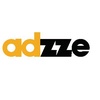The Impact of COVID-19 on the Advertising IndustryIn a recent eMarketer interview of Eric Haggstrom, a forecasting specialist with the company, he provided an interesting insight into how the coronavirus pandemic is affecting eMarketer’s search ad spending forecasts for companies in the US. Hospitality, travel, and retail industries are expected to pull back the most on ad spending until the virus is contained. For the retail industry, the effect is also rooted in supply chain disruptions. Cutting down on ad spends is one major way companies have mitigated the economic impact of COVID-19. Eric Haggstrom forecasts a mere 3% growth rate in the first half of Q1 2020, for the search ad sector which is a significant depreciation compared to last year’s forecasts or that of January 2020.
As of late March, Market Influencer reported a 65% decrease in ad spends by the travel sector. All forms of advert placement including radio and TV have had fair shares of the declining campaigns. Perhaps, the future isn’t so bleak for advertisers because a recent study by apptopia showed that more consumers are resorting to online shopping — and not only for clothes but groceries too. Maybe, ad agencies may need to shift focus to the already packed social media space to jostle for their share of the market; but there`s also an opportunity to re-invent existing strategies.
Fitness advertising will change the model
The concerns over advertising costs existed long before the emergence of COVID-19 and remain a topic for discussion yet. Small businesses find the cost of mainstream advertising crushing, which means that the temporary disappearance of major players like billboard companies and digital media may be well in their favor still. Advertisers wont find a good fit of these vehicles for fitness advertising. Guttmann explained in a Statista publication that the majority of small businesses in the United States in 2017 devoted less than 10,000 U.S. dollars to marketing activities. The demand for pocket-friendly advertising isn’t just a concern peculiar to SMEs, and it’s easy to see that it’s a need that will surpass the existence of COVID-19. Many fitness advertising companies are working with SMEs.The global wellness economy has experienced breath-taking growth since 2010, and the trend seems unrelenting. In 2018, the market hit $4.5 trillion after registering an annual increase of 6.4% between 2015 and 2017, according to Global Wellness Institute. Key markets that are driving the growth are wellness real estate, wellness tourism, and spa industry. In the US, there were 60.9 million gym members in 2017, but the number jumped by over 1 million to 62.5 million in 2018. Further, the number of health club visits has increased from 4.3 billion to 6.1 billion in the decade between 2008 and 2018. Although the improvement does not entirely attributes to fitness advertising, the technique has done a lot to contribute.
Advertising in malls, at bus stops, and bus shelter advertising are fast becoming replaced by in-home advertising. The impact of COVID-19 has kept normally mobile citizens inside their homes. Hence, the best ways to reach your audience and maintain brand visibility will be to take your products and services to them indoors, as it will be clearly unprofitable to place adverts on billboards that no one is seeing.Recently the Interactive Advertising Bureau surveyed nearly 400 media buyers and brands. The results were surprising: 74% think the coronavirus pandemic will have a larger impact on their advertising spend than the 2008 financial crisis. According to the President of Interactive Advertising Bureau, David Cohen, “Typically marketers will press pause for a moment, take a breath, assess the situation, replay and reevaluate.”
Shift to In-Home Advertising
Marketers will have to adapt. It will be key for their survival to staying on top of the latest trends, watching the data for insight. The increased “work from home” periods will naturally lead to an increase in the time spent at home. A survey conducted by the platform Numerator indicated many industries are shifting their advertising messaging. As example, restaurants are pivoting to food delivery message. The food industry has been quick to pivot their messaging to focus on in-home delivery options.Fortunately, Adzze’s new age marketing strategies offer innovative ways to navigate the storm and help brands remain in business. Unique advertisement ideas have surfaced across the landscape; these strategies include placing ads pizza boxes and door handles that can reach the consumers at their homes. As simple as they sound, they generate guaranteed impressions delivering the ads at consumer’s homes.Now, imagine spending about $14,000–20,000/month on outdoor advertising and getting very low ROI. Compare this to spending the same amount of money on in-home focused advertising media. This is what we offer you at Adzze; an array of unique in-the-hand advertising strategies that place your brands in the hands of potential clients in their homes.Alternatively, there are in-the-hand marketing concepts like door hangers that offer cheaper yet more effective advertising opportunities. Running an ad campaign using door hangers is simple. All you need to do is to print your message on either side of the door hanger and deliver them to the target audience’s doors. Interestingly, this is a guerilla tactic. It ambushes customer unexpectedly with an ad. It is more effective as it assures of attention and also guarantees high rates of engagement. Further, the tactic enables precise audience targeting, which translates into significant conversion rates.


No comments yet